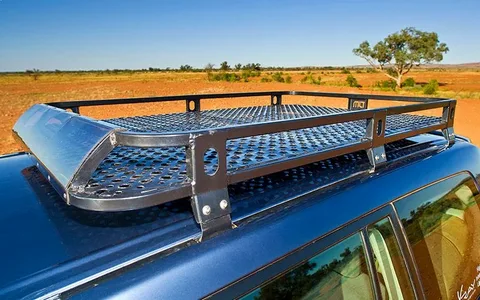How Roof Racks Are Enhancing the EV and SUV Experience

Introduction
The US automotive roof racks market is witnessing strong growth as outdoor lifestyles, adventure tourism, and the rise of SUVs and crossover vehicles drive demand for enhanced cargo solutions. Roof racks have evolved beyond simple utility tools into integrated, aerodynamic, and stylish accessories that complement modern vehicle design. With the growing popularity of road trips, camping, and sports activities, consumers seek more flexible storage options. Automakers are also introducing factory-fitted and modular rack systems to cater to this trend, blending functionality with aesthetics. The market is further strengthened by the rise of electric vehicles, where interior space optimization makes roof-mounted storage essential.
Market Drivers
One of the key drivers of market growth is the rising preference for outdoor recreation and long-distance travel among US consumers. Increased sales of SUVs, pickup trucks, and adventure vehicles have directly fueled demand for roof racks, roof boxes, and cargo carriers. The growing adoption of lightweight aluminum and composite materials is also driving innovation, reducing drag and improving vehicle fuel efficiency. Additionally, aftermarket customization culture in the US promotes sales of roof racks tailored for bicycles, kayaks, surfboards, and camping equipment. OEM integration of roof rack mounting points has made installations easier, further encouraging adoption across multiple vehicle segments.
Market Challenges
Despite its expanding potential, the market faces certain challenges. High-quality roof racks are expensive, particularly those with aerodynamic or modular designs. Poorly fitted aftermarket products can lead to safety concerns, increased wind noise, or reduced vehicle stability. Moreover, stringent regulations on vehicle height and load capacity may restrict usage in certain states. For electric vehicles, the addition of roof racks can negatively affect range and aerodynamics, posing design and efficiency challenges. Limited consumer awareness about load limits and maintenance can also result in improper usage, potentially leading to product or vehicle damage.
Market Opportunities
The market presents strong opportunities through technological innovation and customization. Smart roof racks equipped with integrated lighting, solar charging panels, and digital locking systems are emerging trends. The rise of e-commerce platforms offers greater accessibility for aftermarket purchases and customized designs. Collaborations between roof rack manufacturers and OEMs for aerodynamic designs compatible with EVs will create new product lines. Additionally, the growing trend of overlanding — long-distance off-road travel — is fueling demand for rugged, heavy-duty roof racks capable of carrying tents, water tanks, and spare tires. Sustainable materials and modular designs are likely to gain traction as environmental consciousness grows.
Regional Insights
The United States represents one of the most mature and diverse markets for automotive roof racks globally. Western states such as California, Colorado, and Washington have high adoption rates due to strong outdoor activity cultures. The Midwest and Southern regions, with their large base of pickup and SUV owners, also represent major market hubs. Urban areas are seeing increased adoption among EV and crossover owners seeking efficient cargo solutions. Key manufacturers like Yakima, Thule, and Rhino-Rack maintain strong distribution networks and local assembly operations in the US, ensuring accessibility and product customization suited to regional preferences.
Future Outlook
The future of the US automotive roof racks market will be shaped by lightweight materials, aerodynamic engineering, and integrated smart technology. As automakers focus on EV efficiency, roof rack designs will prioritize drag reduction and modular functionality. Sustainable materials such as recycled aluminum and bio-composites are expected to dominate production. The aftermarket sector will continue to grow, driven by digital customization tools and on-demand manufacturing. Furthermore, integration of roof racks with roof-top storage innovations and solar-enabled designs will make them more multifunctional. The increasing role of e-commerce and online fitment guides will simplify consumer adoption.
Conclusion
The US automotive roof racks market is moving from utility-driven solutions to lifestyle-enhancing products that complement modern mobility. Rising outdoor culture, EV adoption, and smart product designs are transforming the landscape. As technology merges with sustainability, roof racks will become more aerodynamic, efficient, and personalized. With major players innovating toward eco-friendly and digitally enhanced systems, the market is set for sustained expansion, catering to both adventure enthusiasts and everyday commuters seeking flexibility and storage efficiency.
- Art
- Causes
- Crafts
- Dance
- Drinks
- Film
- Fitness
- Food
- Games
- Gardening
- Health
- Home
- Literature
- Music
- Networking
- Other
- Party
- Religion
- Shopping
- Sports
- Theater
- Wellness



